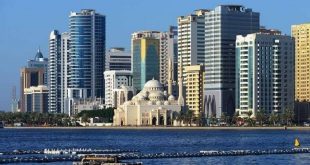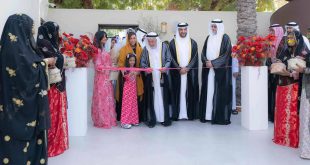After many years of quietly developing its cultural tourism resources, Sharjah has now begun to launch large scale eco-tourism projects that both help provide visitors with a richer experience and help protect the emirate’s natural environment. Perhaps the largest of these, so far, is the Mleiha Archaeological and Eco-tourism Project, which deftly presents the archaeological site and area of natural beauty as a world-class tourist attraction, whilst managing the impact of tourism on the environment.
Developed and managed by Sharjah Investment and Development Authority (Shurooq) and opened in January of this year, the 50 kilometre Mleiha Archaeological and Eco-tourism Project combines archaeology exhibits with eco-tourism and adventure pursuits to offer visitors a unique experience. Visitors can learn about the history of the ancient settlement in Mleiha, which dates by to the 3rd millennium, supported by modern tourist facilities and a multi-lingual destination management team. The surrounding desert and mountains provide plenty of opportunity for tours, camping and extreme sports.
The second phase of the Mleiha project is planned to create a 450 square kilometre Mleiha National Desert Park in collaboration with Sharjah’s Environment and Protected Areas Authority (EPAA), which will reintroduce indigenous wildlife, such as oryx and gazelles, to the area. The second phase will also include a camping park, a motel for overnight stays and an astronomy observatory.
One of the largest new projects announced this year, is Sharjah Safari Park. The park is expected to become one of the largest safari parks outside of Africa, covering an area of about 14 square kilometres (about 3,500 acres) and accommodating up to 50,000 animals. Encompassing Al Bardi Park in Al Dhaid area, the project also aims to help to protect natural ecosystems and biodiversity by creating a sustainable tourism resort, which will include areas dedicated to previously indigenous species.
 Sharjah is also investing heavily in its eastern region, which includes the areas of Dibba, Kalba and Khorfakkan on the Gulf of Oman coast. Shurooq is currently developing Kalba Eco-Tourism Project, one of the largest eco-tourism developments in the region, and Al Hisn Island, a leisure and tourist attraction located in Dibba Al Hisn. A new leisure cruise ship terminal is being built at Khorfakkan Port, in line with Sharjah’s goals to continue to develop its cruise tourism business.
Sharjah is also investing heavily in its eastern region, which includes the areas of Dibba, Kalba and Khorfakkan on the Gulf of Oman coast. Shurooq is currently developing Kalba Eco-Tourism Project, one of the largest eco-tourism developments in the region, and Al Hisn Island, a leisure and tourist attraction located in Dibba Al Hisn. A new leisure cruise ship terminal is being built at Khorfakkan Port, in line with Sharjah’s goals to continue to develop its cruise tourism business.
Meanwhile, close to the Sharjah-Kalba road in the Hajjar mountains, Al Hefaiyah Mountain Conservation Centre was officially opened to the public in March this year. The new 12 square kilometre wildlife conservation centre, managed by EPAA, was established to protect endangered animal species native to the region’s fragile mountain ecosystems. However, like Mleiha and the Wasit Wetland Centre in Sharjah city, the new centre is tourist-ready, with a visitors’ centre, modern facilities and knowledgeable guides.
Against the backdrop of Sharjah’s continuous investment in art, history and Islamic culture, these eco-tourism developments are expected to help enhance the emirate’s appeal to existing tourism market segments, such as GCC families, and new segments, such as independent travelers searching for unique experiences.
Sharjah plans to attract more than 10 million tourists to the emirate by year 2021.
Source: Shurooq, various






